Potřebujeme váš souhlas k využití jednotlivých dat, aby se vám mimo jiné mohly ukazovat informace týkající se vašich zájmů. Souhlas udělíte kliknutím na tlačítko „OK“.
ASTM D7503-10
Standard Test Method for Measuring the Exchange Complex and Cation Exchange Capacity of Inorganic Fine-Grained Soils
Automaticky přeložený název:
Standardní zkušební metoda pro měření Exchange Complex a Cation Exchange Kapacita anorganických jemnozrnných zeminách
NORMA vydána dne 1.7.2010
Informace o normě:
Označení normy: ASTM D7503-10
Poznámka: NEPLATNÁ
Datum vydání normy: 1.7.2010
Kód zboží: NS-38626
Počet stran: 5
Přibližná hmotnost: 15 g (0.03 liber)
Země: Americká technická norma
Kategorie: Technické normy ASTM
Kategorie - podobné normy:
Anotace textu normy ASTM D7503-10 :
Keywords:
bentonite, bound cations, cation exchange capacity, cations, CEC, clay, exchange complex, soluble cations, ICS Number Code 23.060.10 (Globe valves)
Doplňující informace
| Significance and Use | ||||||||||||
|
Fine-grained soils are used in waste containment systems as barriers to flow and contaminant transport. Liquids contained by these barriers can contain ions that may interact with the mineral surfaces in fine-grained soils. The liquid passing through the pores of fine-grained soil can interact with the mineral surface, and affect the physical and chemical characteristics of the soil. This method can be used as part of an evaluation of these interactions. Note 1—The quality of the result produced by this standard depends on the competence of the personnel performing the test and the suitability of the equipment and facilities used. Agencies that meet the criteria of Practice D3740 are generally considered capable of competent and objective testing, sampling, inspection, etc. Users of this standard are cautioned that compliance with Practice D3740 does not in itself ensure reliable results. Reliable results depend on many factors. Practice D3740 provides a means of evaluating some of these factors. |
||||||||||||
| 1. Scope | ||||||||||||
|
1.1 This test method describes the procedures for measuring the soluble and bound cations as well as the cation exchange capacity (CEC) of fine-grained inorganic soils. Clay minerals in fine-grained soils carry a negative surface charge that is balanced by bound cations near the mineral surface. These bound cations can be exchanged by other cations in the pore water, which are referred to as soluble cations. The cation exchange capacity is a measure of the negative surface charge on the mineral surface. The CEC generally is satisfied by calcium (Ca), sodium (Na), magnesium (Mg), and potassium (K), although other cations may be present depending on the environment in which the soil exists. This test method was developed from concepts described previously in Lavkulich (1981) (1) and Rhoades (1982) (2). In soils with appreciable gypsum or calcite, dissolution of these minerals will release Ca in solution that may affect the measurement. 1.2 In this test method, the soluble salts from the mineral surface are washed off with de-ionized water and then the concentration of soluble salts within the extract is measured. The bound cations of the clay are measured by using a solution containing an index ion that forces the existing cations in the bound layer into solution. The total concentrations of bound and soluble cations in this solution are measured. The CEC is measured by displacing the index ion with another salt solution and measuring the amount of the displaced index ion. 1.3 This standard does not purport to address all of the safety concerns, if any, associated with its use. It is the responsibility of the user of this standard to establish appropriate safety and health practices and determine the applicability of regulatory limitations prior to use. 1.4 All observed and calculated values shall conform to the guide for significant digits and rounding established in Practice D6026. The procedures in Practice D6026 that are used to specify how data are collected, recorded, and calculated are regarded as the industry standard. In addition, they are representative of the significant digits that should generally be retained. The procedures do not consider material variation, purpose for obtaining the data, special purpose studies, or any considerations for the objectives of the user. Increasing or reducing the significant digits of reported data to be commensurate with these considerations is common practice. Consideration of the significant digits to be used in analysis methods for engineering design is beyond the scope of this standard. 1.5 The values stated in SI units are to be regarded as the standard, unless other units are specifically given. |
||||||||||||
| 2. Referenced Documents | ||||||||||||
|
Podobné normy:
Historická
1.4.2009
Historická
1.1.2011
Historická
1.5.2014
Historická
1.7.2007
Historická
1.11.2013
Historická
1.1.2013
Odebírejte informace o nově vydaných normách ZDARMA:
Chcete pravidelně odebírat informace o nově vycházejících normách z celého světa a to zcela zdarma?
Přihlašte se k odběru. Vše je velice jednoduché a absolutně ZDARMA.
Na výběr máte vydavatele z celého světa.



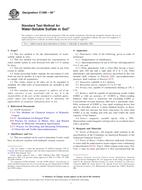 ASTM C1580-09e1
ASTM C1580-09e1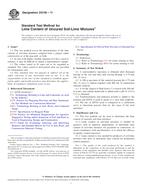 ASTM D3155-11
ASTM D3155-11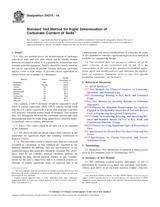 ASTM D4373-14
ASTM D4373-14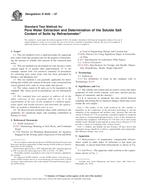 ASTM D4542-07
ASTM D4542-07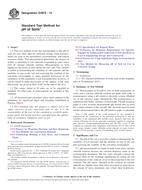 ASTM D4972-13
ASTM D4972-13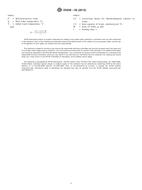 ASTM D5258-02(2013)..
ASTM D5258-02(2013)..
 Cookies
Cookies
